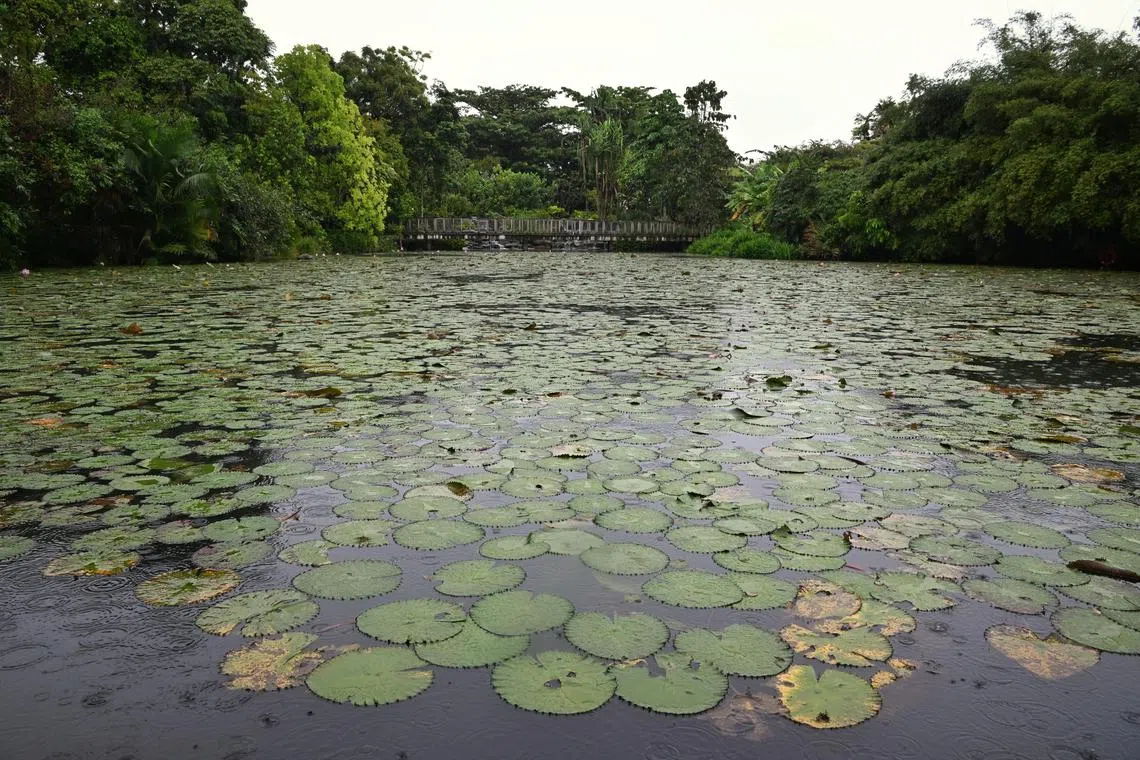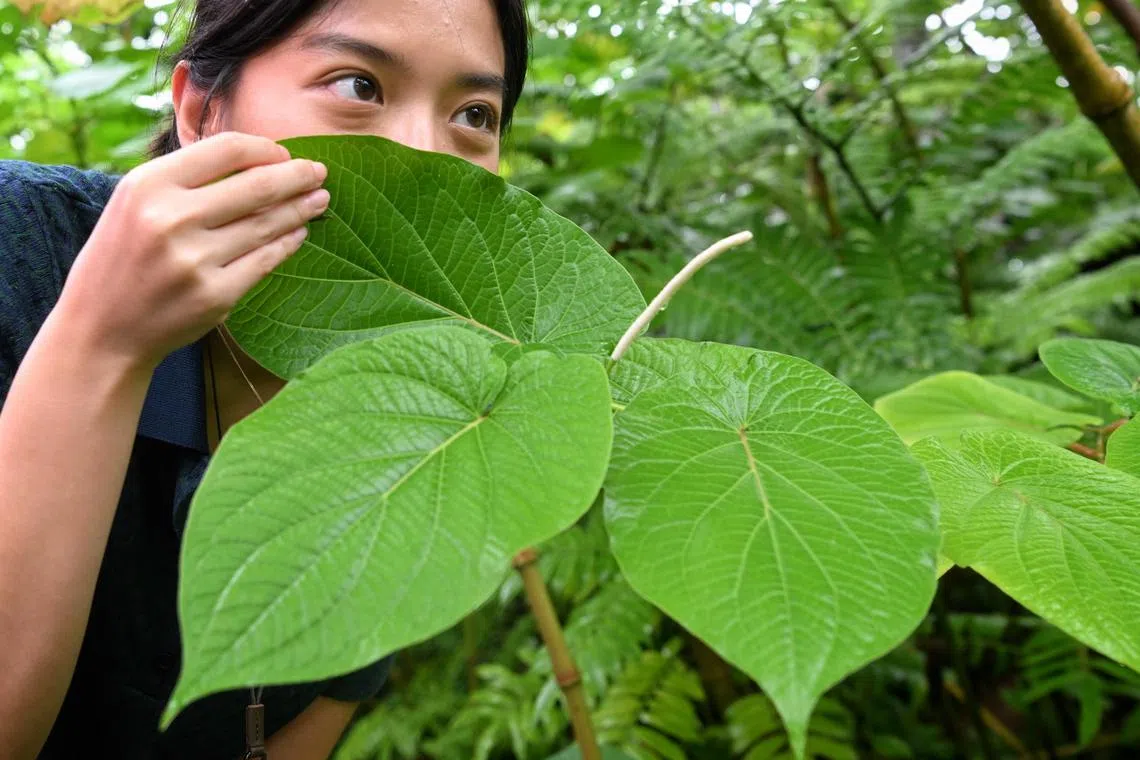Free tours at Gardens by the Bay on carbon capture, biodiversity from 2023
Sign up now: Get ST's newsletters delivered to your inbox
Follow topic:
SINGAPORE - Come next year, Singaporeans and local residents will have a choice of four new free nature tours that teach them typically complex scientific concepts with the help of plants found in Gardens by the Bay.
Using lesser-known examples, such as the elephant ear fig in the outdoor gardens, professional guides will illustrate concepts such as the interconnectedness of different species in nature.
To show how species are interrelated, Mr Rodricks Wong, senior assistant director of Gardens by the Bay’s sustainability office, said: “Figs are often touted as ‘keystone species’, which means that these trees play a disproportionately large role in the lives of many creatures in an ecosystem. They provide food and shelter to many birds, reptiles, frogs, bats, insects, crustaceans, fungi and lichens.”
He added: “The complex symbiotic interactions between some species of figs and wasps, for example, is among the most fascinating stories in nature, as they rely on each other for reproduction. The female wasp will lay her eggs inside a fig and, at the same time, deposit pollen to fertilise the fig, and then she will die inside the fig.”
The tours – which cover biodiversity and how species are interrelated in ecosystems; the science of carbon in the environment and how it is captured; the different species in urban wetland environments; and seeds and senses in nature – will run on Saturdays and Sundays.
They include free admission to the cooled conservatories if the plant species featured are located within these attractions.
For instance, the Eastern Cape blue cycad featured in the biodiversity and ecosystems tour is an endangered South African plant that is grown in the temperate zone of the Flower Dome.
The tours, sponsored by Keppel Corporation, will be offered until 2025.
Each tour can take up to 15 people and will last for an hour.
Mr Wong added: “The series will also help participants uncover hidden gems at Gardens by the Bay that they might miss out on without a guide.”
The tours on the science of carbon and urban wetlands will begin in January, while the seeds and senses tour and biodiversity and ecosystems tour will start from February.
Members of the public can sign up for the tours on a first come, first served basis at www.gardensbythebay.com.sg/sustainabilitytours.
Tour highlights
Urban Wetlands Tour

The Kingfisher Wetlands.
ST PHOTO: CHONG JUN LIANG
Since the Kingfisher Wetlands opened in November 2021, many Singaporeans have visited it to look out for rare birds. But lesser-known plants make this sanctuary a biodiversity hot spot.
For instance, the firefly mangrove tree, also popularly known as the crab apple mangrove tree, attracts swarms of fireflies that light up mangrove flats in Malaysia seasonally. While fireflies are rare in Singapore, the fruits of these plants are sometimes used in curries for their salty and sour taste.
Carbon and Climate Themed Tour
While trees have been called the “lungs of the earth”, not all of these “lungs” are made equal. It was found that trees that keep growing for a long time and reach heights of 30m capture the most carbon.
One particular tree stands out among the rest – the cuipo tree.
These long-living giant trees can soar to a height of over 50m, and they contribute much to carbon storage in the rainforests over the long term. But they take a long time to grow.
The cuipo trees planted at Gardens by the Bay 10 years ago were about 6m tall then, and they have since grown to only 15m.
Seeds and Senses Tour

ST reporter Gena Soh sniffs the Mexican Pepperleaf (Piper Sanctum) which has a root beer scent.
ST PHOTO: CHONG JUN LIANG
Nature is often appreciated visually, but less often through other stimuli such as scent, despite the fact that it can play a key role in nature, either as an incentive or a deterrent.
The mexican pepperleaf, found in the forests of South America, is also commonly known as the root beer plant. This is because its main aromatic compound is also found in sassafras, a plant that is usually used in root beer.
This compound has antimicrobial properties and protects the plant from diseases. Additionally, researchers believe the compound also functions as an insect repellent, allowing leaves to grow mostly unblemished by hungry critters.

